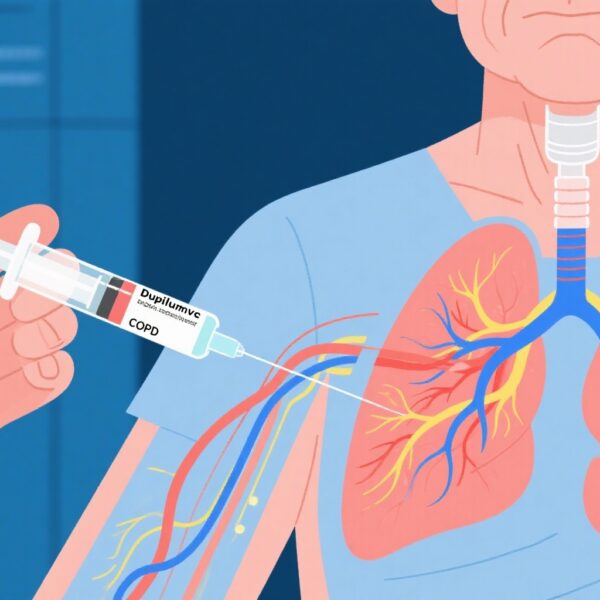Study background and disease burden
Chronic obstructive pulmonary disease (COPD) represents a leading cause of morbidity and mortality globally, characterized by persistent airflow limitation and systemic manifestations including skeletal muscle dysfunction. Exercise training remains a cornerstone of pulmonary rehabilitation, improving functional capacity and quality of life. However, the heterogeneous responsiveness to exercise interventions among COPD patients remains a clinical challenge, often attributed to underlying metabolic disturbances, inflammation, and oxidative stress. Previous research has identified altered plasma and muscle amino acid profiles in COPD, particularly in glutamate, glutamine, branched-chain amino acids (BCAAs), and taurine, which are crucial in muscle energetics and repair. Prior studies have predominantly focused on endurance exercise, with limited understanding of how resistance exercise influences these metabolic pathways, especially regarding whole-body and intracellular amino acid production in COPD versus healthy older adults.
Study design
This study interrogated the dynamics of amino acid metabolism following a single session of resistance exercise in older adults with COPD and age-matched healthy controls. Utilizing stable isotope pulse infusion techniques, investigators quantified plasma concentrations, whole-body production (WBP), and intracellular production of glutamate, glutamine, BCAAs (leucine, isoleucine, valine), and taurine. The cohort comprised 24 COPD patients and 25 healthy older participants. Measurements were taken at baseline (pre-exercise), and at 1 hour and 24 hours post-resistance exercise, allowing assessment of immediate and sustained metabolic responses. The resistance exercise protocol was standardized, targeting major muscle groups, serving as an acute physiological stimulus to probe metabolic adaptations.
Key findings
Baseline assessments revealed significant metabolic disparities in COPD participants, who exhibited lower WBP of glutamine, taurine, and BCAAs compared to healthy controls (p < 0.05), reflecting compromised muscle amino acid turnover. Following resistance exercise, both groups demonstrated a pronounced increase in WBP of glutamate by 37-42% and intracellular glutamate production by 37-40%, highlighting a robust upregulation of glutamate metabolism (all p < 0.0001). Glutamine WBP also rose modestly by 9-10%, whereas taurine WBP decreased by 7%, an effect sustained at 24 hours post-exercise (p < 0.05), suggesting a persistent metabolic shift.
Interestingly, WBP of BCAAs did not change significantly; however, plasma levels of leucine and isoleucine declined by 16% and 13% respectively in COPD participants (p < 0.05). This suggests enhanced tissue uptake and utilization of BCAAs, potentially as substrates for glutamate synthesis or energy provision. The reduction of circulating BCAAs in COPD post-exercise may have implications for muscle anabolism and recovery, given their established role in protein synthesis signaling pathways.
These findings indicate that a single bout of resistance exercise induces prolonged alterations in glutamate-related amino acid metabolism in older adults, irrespective of COPD status, though baseline metabolic impairments in COPD patients may influence substrate availability and adaptation capacity.
Expert Commentary
The study’s application of stable isotope tracer methodology provides a nuanced understanding of amino acid kinetics during exercise-induced metabolic stress. The observed sustained elevation in glutamate whole-body and intracellular production aligns with glutamate’s key role as a nitrogen donor, energy substrate, and precursor for antioxidant synthesis (e.g., glutathione), suggesting enhanced intracellular metabolic demands after resistance exercise. The concomitant decrease in taurine WBP may reflect altered osmoregulatory or antioxidant responses, warranting further investigation.
Moreover, the lowered plasma BCAA concentrations post-exercise in COPD highlight a potential trade-off between maintaining energy homeostasis and muscle anabolic signaling, underscoring the complexity of metabolic adaptations in this population. This metabolic pattern may contribute to the blunted hypertrophic response and muscle wasting observed in COPD patients despite exercise training.
Limitations include the acute exercise model which may not fully capture chronic adaptations, and the relatively small sample size restricting subgroup analyses. Future research should extend these observations to longitudinal exercise interventions and explore targeted nutritional or pharmacologic strategies (e.g., BCAA supplementation) to optimize amino acid metabolism and muscle health in COPD.
Conclusion
This study elucidates that resistance exercise prompts a prolonged increase in glutamate whole-body and intracellular production in older adults with and without COPD, accompanied by decreased plasma BCAA levels particularly in COPD. These metabolic shifts indicate an increased reliance on glutamate-related pathways to meet energetic and anabolic demands post-exercise. Clinically, these findings highlight the need to consider metabolic support strategies in pulmonary rehabilitation programs, particularly addressing BCAA availability to optimize muscle anabolism and functional outcomes in COPD patients. Further exploration of integrated metabolic, nutritional, and exercise interventions is warranted to overcome muscle dysfunction and enhance rehabilitation efficacy in this vulnerable population.
References
1. Mbilinyi RH, Deutz NEP, Cruthirds CL, et al. Prolonged increase in glutamate whole body and intracellular production in older adults with COPD and healthy controls post-resistance exercise. Metabolism. 2025 Jul;168:156185. doi: 10.1016/j.metabol.2025.156185.
2. Maltais F, Decramer M, Casaburi R, et al. An official American Thoracic Society/European Respiratory Society statement: update on limb muscle dysfunction in chronic obstructive pulmonary disease. Am J Respir Crit Care Med. 2014 Oct 15;189(9):e15-62.
3. Deutz NE, Safar A. Muscle wasting in chronic disease: mechanisms and therapies. Nat Rev Endocrinol. 2019 May;15(5):315-326.
4. Wolfe RR. Branched-chain amino acids and muscle protein synthesis in humans: myth or reality? J Int Soc Sports Nutr. 2017 Apr 5;14:30.
5. Gosker HR, Zeegers MP, Wouters EF, Schols AM. Muscle fiber type shifting in the vastus lateralis of patients with COPD is associated with disease severity: a systematic review and meta-analysis. J Appl Physiol (1985). 2007 Apr;102(3):1072-1083.

